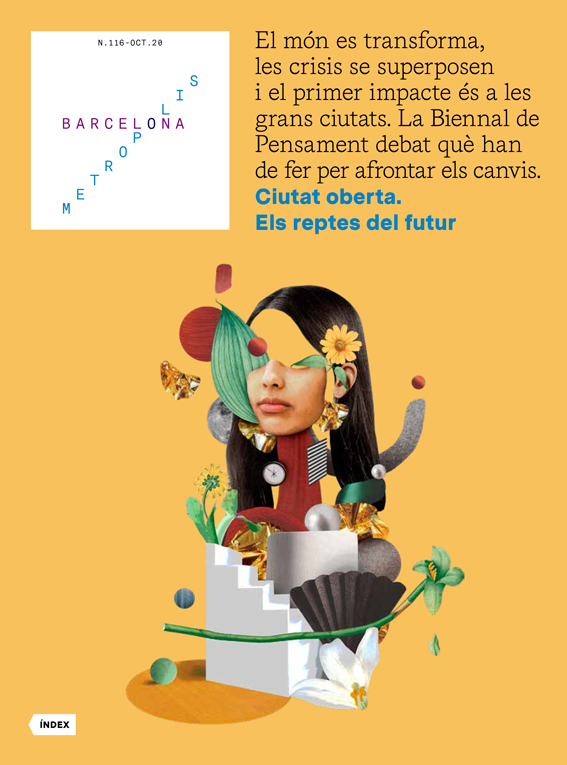The city didn’t sleep, or didn’t want to
- Books
- Culture Folder
- Oct 20
- 5 mins
The lights and shadows of the 1940s and 1950s in Barcelona, collected in Paco Villar’s latest book. From the restaurants Los Caracoles on the street Escudellers to La Puñalada and La Parrilla del Ritz; from the brothels of Madame Petit to La Casita Blanca. The post-war period characterised by rationing and the bourgeoisie dining in style, the black market, the impulsiveness of the world of the rich, with its wonder and its depravity...
On the subject of this sleepless life, and especially of its underworld, Paco Villar (Barcelona, 1961) has been and continues to be an excellent chronicler, speleologist and archaeologist. A student of Josep María Huertas (1939-2013) and Lluís Permanyer, in 1996 he published a remarkable volume entitled Historia y leyenda del Barrio Chino [The Barrio Chino: History and Legend]. There has been no such book (featuring magnificent photos) nor such a record since the times when the journalist Francisco Madrid (1900-1952) went to spend the night in one of those appalling boarding houses on the street Arc de Teatre, becoming obsessed with bedbugs for days.
His later works – La Criolla [name of a cabaret venue in Barcelona], Banys de Mar [Sea Bathing], Los cafés de Barcelona [Barcelona’s Cafés] – live up to Lluís Permanyer’s opinion: “Paco Villar is the best. He conducts painstaking research and analysis. All of his books are outstanding.”
With this generous and impressive volume, both in terms of the text and the images, he once again roams those streets that – in my opinion, and something similar must happen Permanyer – if you close your eyes you can picture them as they were in the twenties, thirties, forties... From the frightening streets of El Cid to Conde del Asalto and Escudellers, when the Bofarulls opened the restaurant Los Caracoles.
In 1939, the renowned brothel, Madame Petit (an entire building), on the street Arc de Teatre was awash with soldiers. Shortly before Franco’s forces arrived, the military command ordered that the prostitution houses be opened. Indeed, it was the post-war period of eternal rationing, of hunger, of the cold; of hundreds and hundreds of homeless people, of families crowded into small and cramped quarters. In this city – the world of Francisco González Ledesma – there were street markets where even one’s mother was for sale, but also posters on the Parallel boulevard announcing La Bella Dorita, our city’s Mae West. Barcelona wanted to be content and the list of names is endless: Totó, Carmen de Lirio, Maty Mont (with a spectacular figure and whose skimpy attire was condemned by the authorities). The book had to reclaim all that glamour, and Sebastià Gasch’s words provide detailed descriptions of performances, talents and behaviour in front of the audience. And that capacity of certain artists to touch on the forbidden, to imply and to mock – or, at least, try to – the iron censorship that raises eyebrows on hearing the word “cigala” [an allusion to the lyrics of a song, La Pecera, changed by La Bella Dorita to include the word “cigala”, which bears a double meaning in Catalan, i.e. “langoustine” or, in colloquial speak, “penis”].
In this impressive volume, Paco Villar wanders once again through streets that, if you close your eyes, can be pictured just as they were in the twenties, thirties, forties...
Uptown
This time Villar heads uptown. And from both sides of the Eixample neighbourhood come the lights and shadows of the forties and even the fifties. Among those who were left with nothing and those who came back from abroad with pockets even of caviar. We go to the restaurants La Puñalada and La Parilla del Ritz, and we discover the wonderful story of Bernard Hilda, a musician who manages to flee from the Nazis and ends up reigning with his orchestra in the city’s finest venues. In La Casita Blanca, which offers moments of comfort and pleasure, and the charm of the beautiful Calvo Sotelo square and its ladies who enjoy an aperitif on a terrace. At the Windsor Palace, California and La Rosaleda. People step out of their splendid cars and they are attended to by waiters who accompany them to beautiful gardens, one of them designed by Adolf Florensa. The world of the bourgeoisie who dine in style, of the black market, of the high appearance fees for international artists. The world of the impulsiveness of the rich, with its wonder and its depravity.
And spy stories raise their head awaiting to be told: a grand bourgeois from Diagonal offers grandiose parties with the cream of the city, but nobody knows that he is a member of the French resistance. At La Rosaleda, José Luis de Villalonga, Ignacio Agustí and other notable figures witness – and take note – of those tables where the regime’s authorities dined, but also where a friend of the allies was able to play chords from the Casablanca soundtrack.
We cannot travel back to that era, but where an educated journalist was sitting at a table, and where there was a Sempronio [pseudonym of the writer Andreu Avel·lí Artís i Tomàs] and admirer of Mistingett’s legs, lies a possible book today. And as good as this one, with a soundtrack by Josephine Baker and Antonio Machín, Charles Trenet and Maurice Chevalier. Or with Eva Perón honoured by Bernard Hilda with chords from the tango La Cumparsita.
What a world it was.
Cuando la riqueza se codeaba con el hambre. (Vida nocturna de la Barcelona de posguerra, 1939-1952)
[When Wealth Rubbed Shoulders with Hunger. (Post-War Barcelona Nightlife, 1939-1952)]
Paco Villar
Ajuntament de Barcelona
355 pages – Barcelona 2020
The newsletter
Subscribe to our newsletter to keep up to date with Barcelona Metròpolis' new developments



